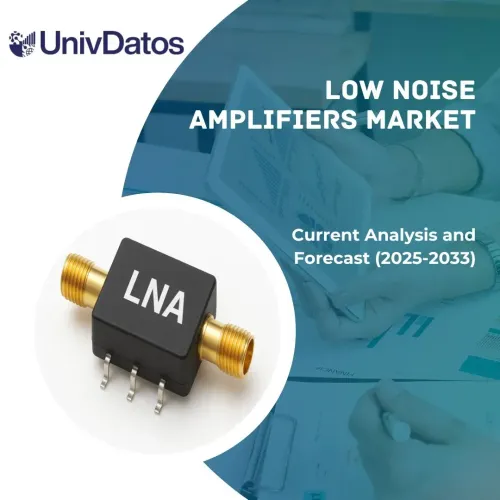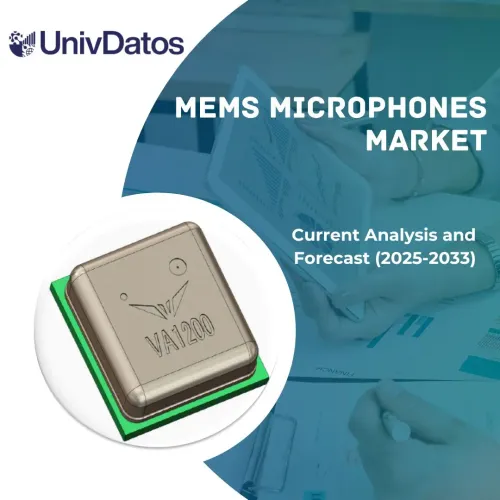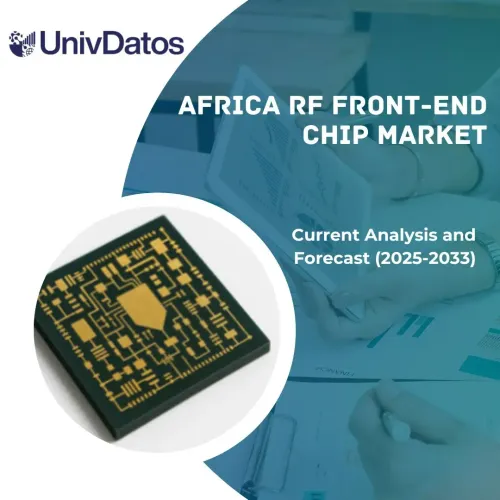- Trang chủ
- Về chúng tôi
- Ngành
- Dịch vụ
- Đọc
- Liên hệ với chúng tôi
Thị trường Mạch Tích Hợp Quang Tử: Phân Tích Hiện Tại và Dự Báo (2024-2032)
Chú trọng vào Nguyên liệu thô (Vật liệu III-V, Lithium Niobate, Silica-on-silicon và các loại khác); Ứng dụng (Viễn thông, Y sinh, Trung tâm dữ liệu và các loại khác); Quy trình tích hợp (Hybrid và Monolithic); Khu vực/Quốc gia.
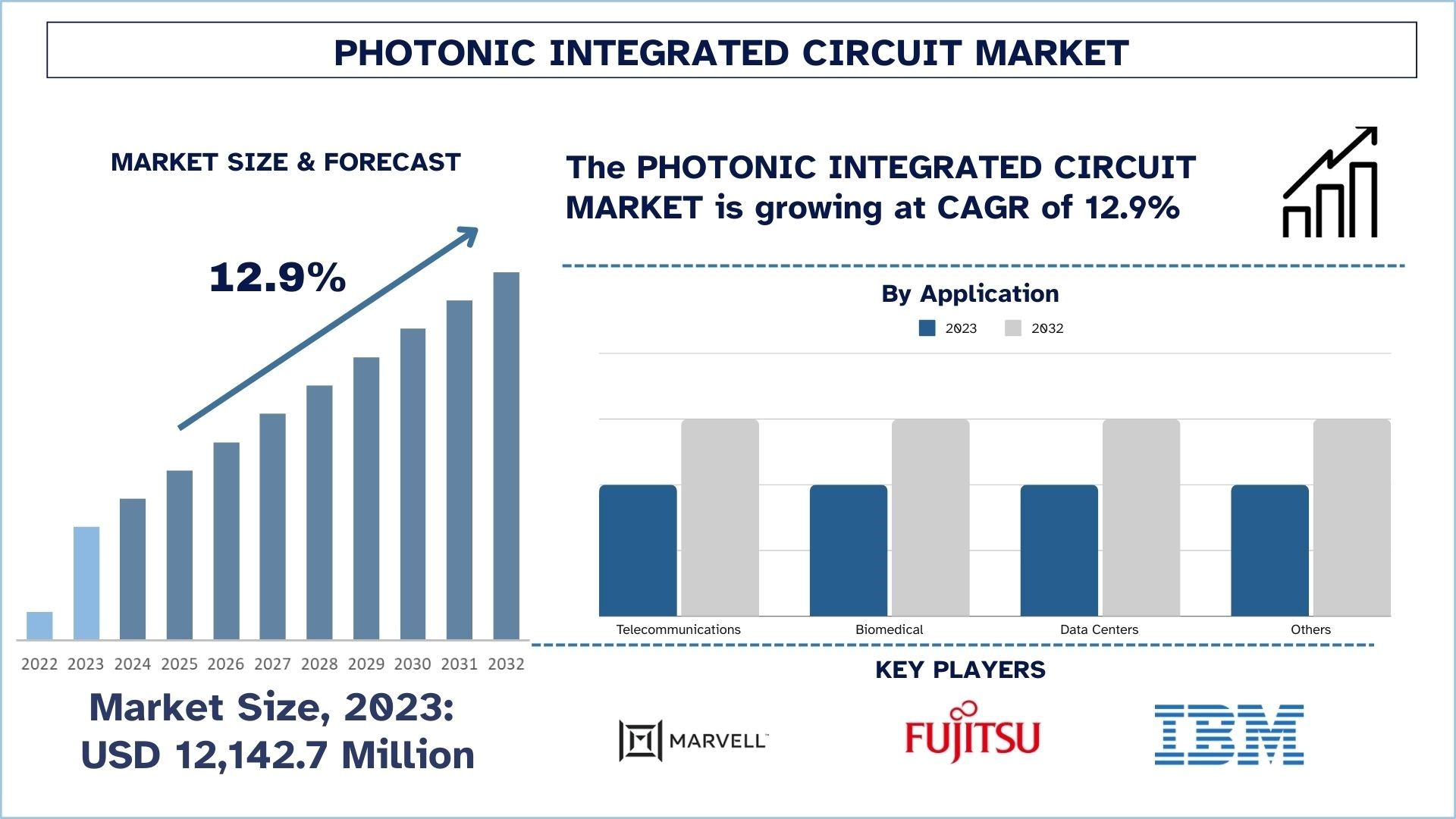
Quy mô & Dự báo Thị trường Mạch Tích hợp Quang tử
Thị trường Mạch Tích hợp Quang tử được định giá 12.142,7 triệu USD vào năm 2023 và dự kiến sẽ tăng trưởng với tốc độ CAGR mạnh mẽ khoảng 12,9% trong giai đoạn dự báo (2024-2032) do nhu cầu ngày càng tăng đối với truyền dữ liệu tốc độ cao và các giải pháp tiết kiệm năng lượng.
Phân tích Thị trường Mạch Tích hợp Quang tử
Thị trường Mạch Tích hợp Quang tử (PIC) đang phát triển nhanh chóng do nhu cầu về truyền dữ liệu tốc độ cao, tiêu thụ điện năng thấp và các thành phần quang học hiệu suất cao ngày càng tăng nhanh chóng. PIC cho phép nhiều chức năng quang tử, do đó các hệ thống này được sử dụng trong viễn thông, trung tâm dữ liệu, chăm sóc sức khỏe và quốc phòng. Các thiết bị này mở ra những cơ hội vượt trội so với những gì có thể đạt được trong các mạch điện tử truyền thống, chúng nhanh hơn và tiêu thụ ít năng lượng hơn. Chúng là một phần không thể thiếu trong việc quản lý các nhu cầu đến cùng với thế giới số hóa tiên tiến. Các lực lượng thị trường lớn bao gồm những cải tiến trong công nghệ viễn thông, 5G, mạng IoT và điện toán đám mây. Ngoài ra, việc chuyển sang quy mô micromet cũng như cấu hình các loại vật liệu khác nhau để có hiệu suất tốt hơn đang thúc đẩy việc áp dụng các ứng dụng PIC hơn nữa.
Các quốc đảo Thái Bình Dương dự kiến sẽ có mức tăng trưởng cao nhất ở Châu Á-Thái Bình Dương và các thị trường chính của họ sẽ là Trung Quốc, Nhật Bản và Ấn Độ do hệ thống viễn thông tốt, hỗ trợ chính sách và sự quan tâm ngày càng tăng đối với hệ thống quang tử. Ví dụ: quang tử đã được liệt kê là một trong những dự án quan trọng có tầm quan trọng chiến lược trong ‘Sản xuất tại Trung Quốc 2025’ để tránh phụ thuộc nhiều vào các công nghệ bán dẫn bên ngoài và nâng cao sản xuất trong nước. Ở Bắc Mỹ, sự hỗ trợ của chính phủ đối với các chương trình tài trợ quang tử như tài trợ DARPA trong Hoa Kỳ hỗ trợ nghiên cứu quang tử cho các mục đích tiên tiến trong quốc phòng và viễn thông. Các chính sách và sáng kiến này cùng với việc tăng cường đầu tư tư nhân đang cải thiện thị trường PIC, đồng thời định vị nó như một công nghệ thiết yếu cho phép các đổi mới trong tương lai ở một số lĩnh vực có nhu cầu cao.
Xu hướng Thị trường Mạch Tích hợp Quang tử
Phần này thảo luận về các xu hướng thị trường chính đang ảnh hưởng đến các phân khúc khác nhau của Mạch Tích hợp Quang tử do nhóm chuyên gia nghiên cứu của chúng tôi xác định.
Chính sách của Chính phủ Hỗ trợ Ngành Mạch Tích hợp Quang tử
Hoa Kỳ
AIM Photonics: Quan hệ đối tác công tư, Viện Sản xuất Quang tử Tích hợp Hoa Kỳ (AIM Photonics) nhằm mục đích đẩy nhanh quá trình sản xuất và đổi mới PIC với khả năng tiếp cận các cơ sở sản xuất và thử nghiệm tiên tiến cho giới học thuật, ngành công nghiệp và các tổ chức chính phủ.
Sáng kiến DARPA: Bộ vi xử lý Nhúng Tối ưu hóa bằng Quang tử (POEM) là một ví dụ về chương trình cố gắng kết hợp các công nghệ quang tử vào bộ vi xử lý để đáp ứng tốt hơn các mục tiêu về hiệu quả năng lượng và cải thiện khả năng giao tiếp.
Hợp tác NIST: AIM Photonics hợp tác với Viện Tiêu chuẩn và Công nghệ Quốc gia để phát triển chip quang tử bằng cách phát triển PIC tiên tiến với sự trợ giúp của kiến thức chuyên môn về đo lường và mô hình hóa thiết bị.
Liên minh châu Âu
Photonics21: Một Nền tảng Công nghệ Châu Âu, tích hợp ngành công nghiệp và học viện, cam kết thúc đẩy nghiên cứu và đổi mới quang tử trong việc gây ảnh hưởng đến các ưu tiên và chính sách của tài trợ và hỗ trợ của EU.
Horizon Europe: Các dự án quang tử được tài trợ rộng rãi trong khuôn khổ chương trình nghiên cứu và đổi mới của EU và các công nghệ PIC đang tiến bộ do trọng tâm tài trợ như vậy.
Châu Á-Thái Bình Dương
Trung Quốc: Quang tử là một lĩnh vực quan trọng trong sáng kiến "Sản xuất tại Trung Quốc 2025", trong đó chính phủ đang đầu tư vào nghiên cứu và năng lực sản xuất để hạn chế sự phụ thuộc vào các công nghệ nước ngoài.
Nhật Bản: Tầm nhìn 'Xã hội 5.0' của Nhật Bản khuyến khích các công nghệ tiên tiến như quang tử được đưa vào nhiều lĩnh vực khác nhau với sự tài trợ của chính phủ và sự hợp tác của ngành.
Các chính sách này cùng nhau nhằm mục đích thúc đẩy công nghệ PIC, tăng cường sản xuất trong nước và duy trì khả năng cạnh tranh toàn cầu trong bối cảnh quang tử đang phát triển nhanh chóng.
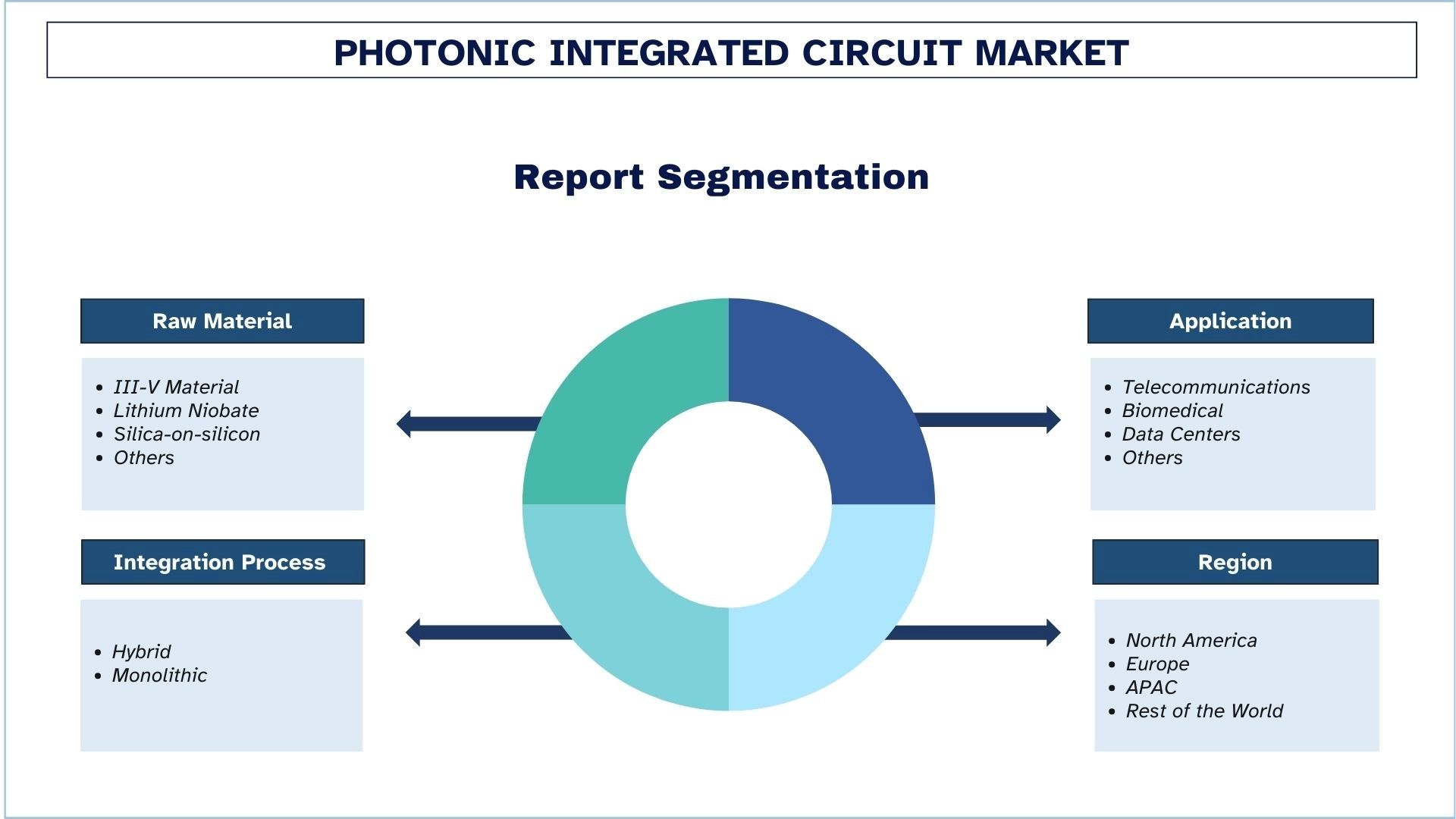
APAC Dự kiến sẽ Tăng trưởng với CAGR Đáng kể Trong Giai đoạn Dự báo
Khi cơ sở hạ tầng viễn thông của khu vực này mở rộng, doanh số bán hàng điện tử tiêu dùng tiếp tục tăng nhanh và khi mạng lưới điều khiển cho kỷ nguyên 5G hình thành, khu vực Châu Á Thái Bình Dương (APAC) đang nhanh chóng trở thành một lực lượng hàng đầu trong thị trường Mạch Tích hợp Quang tử (PIC). Dẫn đầu sự tăng trưởng này là các quốc gia như Trung Quốc, Nhật Bản, Hàn Quốc và Ấn Độ tận dụng công nghệ PIC để theo kịp nhu cầu không ngừng về truyền dữ liệu cấp cao hơn và dung lượng mạng lớn hơn. Với việc triển khai 5G trên khắp APAC và những tiến bộ liên tục trong các trung tâm dữ liệu, PIC đang trở nên cần thiết cho băng thông cao và độ trễ thấp theo yêu cầu cho các ứng dụng, thúc đẩy nhu cầu về PIC. Ngoài ra, việc thị trường chấp nhận PIC phụ thuộc vào vai trò ngày càng tăng của PIC trong các lĩnh vực chăm sóc sức khỏe, ô tô và công nghiệp.
Việc mở rộng thị trường cũng được thực hiện bởi các chính sách chính phủ quan trọng và đầu tư chiến lược vào thị trường PIC APAC. "Sản xuất tại Trung Quốc 2025" của Trung Quốc và tầm nhìn "Xã hội 5.0" của Nhật Bản đặt ra, trong số những thứ khác, để phát triển công nghệ quang tử và giảm sự phụ thuộc vào các giải pháp bán dẫn nước ngoài. Các nỗ lực R&D được chính phủ hỗ trợ về quang tử cho viễn thông và các ứng dụng AI đang được tiến hành ở Hàn Quốc trong khi Ấn Độ đang đầu tư vào năng lực sản xuất bán dẫn và quang tử trong nước. Sự kết hợp của các chính sách này cùng với đầu tư tư nhân đang đưa APAC vào vị trí thống trị hàng đầu của thị trường PIC toàn cầu với lời hứa sẽ thiết lập một tốc độ đổi mới chưa từng có và thiết lập một môi trường bổ sung cho sự tăng trưởng trong tương lai.

Tổng quan về Ngành Mạch Tích hợp Quang tử
Thị trường Mạch Tích hợp Quang tử mang tính cạnh tranh và phân mảnh, với sự hiện diện của một số nhà chơi thị trường toàn cầu và quốc tế. Các nhà chơi chính đang áp dụng các chiến lược tăng trưởng khác nhau để tăng cường sự hiện diện trên thị trường của họ, chẳng hạn như quan hệ đối tác, thỏa thuận, hợp tác, ra mắt sản phẩm mới, mở rộng địa lý và sáp nhập và mua lại. Một số nhà chơi lớn đang hoạt động trên thị trường là Marvell Technology, Fujitsu, IBM, Infinera Corporation, Intel Corporation, Lumentum Operations LLC, Ciena Corporation, Cisco Systems, Inc., EMCORE Corporation và STMicroelectronics.
Tin tức Thị trường Mạch Tích hợp Quang tử
Tháng 8 năm 2024 - Sivers Semiconductors AB (STO: SIVE), nhà cung cấp hàng đầu các chip tích hợp và mô-đun quang tử cho các giải pháp cảm biến và truyền thông tiên tiến nhất, thông báo rằng Công ty đã ký một thư bày tỏ ý định không ràng buộc để sáp nhập công ty con Sivers Photonics Ltd của mình với byNordic Acquisition Corporation ("byNordic", Nasdaq: BYNO), một công ty mua lại có mục đích đặc biệt được giao dịch công khai. Giao dịch được đề xuất sẽ tạo ra một công ty quang tử độc lập, được giao dịch công khai, công ty này sẽ được tài trợ bởi các khoản dự trữ tiền mặt đáng kể sau khi hoàn thành quy trình de-SPAC.
Phạm vi Báo cáo Thị trường Mạch Tích hợp Quang tử
Thuộc tính Báo cáo | Chi tiết |
Năm cơ sở | 2023 |
Giai đoạn dự báo | 2024-2032 |
Đà tăng trưởng | Tăng tốc với CAGR là 6,5% |
Quy mô thị trường 2023 | 25,4 tỷ USD |
Phân tích khu vực | Bắc Mỹ, Châu Âu, Châu Á-Thái Bình Dương, Phần còn lại của Thế giới |
Khu vực đóng góp chính | Châu Á-Thái Bình Dương dự kiến sẽ tăng trưởng với CAGR cao nhất trong giai đoạn dự báo. |
Các quốc gia chính được đề cập | Hoa Kỳ, Canada, Đức, Pháp, Vương quốc Anh, Tây Ban Nha, Ý, Trung Quốc, Nhật Bản và Ấn Độ |
Các công ty được giới thiệu | Sealed Air Corporation, Placon Corporation, Pactiv Evergreen Inc., Sonoco Products Company, Huhtamaki, Inc., Amcor Plc., Dart Container Corporation, Tempack, Triton International Enterprises, Inc., Graphic Packaging International, LLC. |
Phạm vi Báo cáo | Xu hướng Thị trường, Động lực và Hạn chế; Ước tính và Dự báo Doanh thu; Phân tích Phân khúc; Phân tích Cung và Cầu; Bối cảnh Cạnh tranh; Hồ sơ Công ty |
Các phân khúc được đề cập | By Vật liệu, Loại, Theo Ứng dụng, Theo Khu vực/Quốc gia |
Lý do nên mua báo cáo này:
Nghiên cứu bao gồm phân tích kích thước và dự báo thị trường được xác thực bởi các chuyên gia hàng đầu trong ngành được xác thực.
Báo cáo trình bày đánh giá nhanh về hiệu suất tổng thể của ngành trong nháy mắt.
Báo cáo bao gồm phân tích chuyên sâu về các đồng nghiệp nổi bật trong ngành với trọng tâm chính vào tình hình tài chính kinh doanh chính, danh mục sản phẩm, chiến lược mở rộng và những phát triển gần đây.
Kiểm tra chi tiết các động lực, hạn chế, xu hướng chính và cơ hội thịnh hành trong ngành.
Nghiên cứu bao quát toàn diện thị trường trên các phân khúc khác nhau.
Phân tích sâu về ngành ở cấp khu vực.
Tùy chọn Tùy chỉnh:
Mạch Tích hợp Quang tử toàn cầu có thể được tùy chỉnh thêm theo yêu cầu hoặc bất kỳ phân khúc thị trường nào khác. Bên cạnh đó, UMI hiểu rằng bạn có thể có nhu cầu kinh doanh riêng, vì vậy hãy thoải mái liên hệ với chúng tôi để nhận được báo cáo hoàn toàn phù hợp với yêu cầu của bạn.
Mục lục
Phương Pháp Nghiên Cứu Phân Tích Mạch Tích Hợp Quang Tử (2024-2032)
Phân tích thị trường trong quá khứ, ước tính thị trường hiện tại và dự báo thị trường tương lai của Mạch Tích Hợp Quang Tử toàn cầu là ba bước chính được thực hiện để tạo ra và khám phá việc áp dụng Mạch Tích Hợp Quang Tử ở các khu vực lớn trên toàn cầu. Nghiên cứu thứ cấp toàn diện đã được thực hiện để thu thập số liệu thị trường trong quá khứ và ước tính quy mô thị trường hiện tại. Thứ hai, nhiều phát hiện và giả định đã được xem xét để xác thực những thông tin chi tiết này. Hơn nữa, các cuộc phỏng vấn sơ cấp sâu rộng cũng đã được thực hiện với các chuyên gia trong ngành trên toàn bộ chuỗi giá trị của Mạch Tích Hợp Quang Tử toàn cầu. Sau khi giả định và xác thực số liệu thị trường thông qua các cuộc phỏng vấn sơ cấp, chúng tôi đã sử dụng phương pháp tiếp cận từ trên xuống/từ dưới lên để dự báo quy mô thị trường hoàn chỉnh. Sau đó, các phương pháp phân chia thị trường và phân tích dữ liệu tam giác đã được áp dụng để ước tính và phân tích quy mô thị trường của các phân khúc và phân nhóm của ngành. Phương pháp luận chi tiết được giải thích dưới đây:
Phân Tích Quy Mô Thị Trường Trong Quá Khứ
Bước 1: Nghiên Cứu Chuyên Sâu Các Nguồn Thứ Cấp:
Nghiên cứu thứ cấp chi tiết đã được thực hiện để thu thập quy mô thị trường trong quá khứ của Mạch Tích Hợp Quang Tử thông qua các nguồn nội bộ của công ty như báo cáo thường niên & báo cáo tài chính, thuyết trình hiệu suất, thông cáo báo chí, v.v., và các nguồn bên ngoài bao gồm tạp chí, tin tức & bài viết, ấn phẩm của chính phủ, ấn phẩm của đối thủ cạnh tranh, báo cáo ngành, cơ sở dữ liệu của bên thứ ba và các ấn phẩm đáng tin cậy khác.
Bước 2: Phân Khúc Thị Trường:
Sau khi có được quy mô thị trường trong quá khứ của Mạch Tích Hợp Quang Tử, chúng tôi đã tiến hành phân tích thứ cấp chi tiết để thu thập thông tin chi tiết về thị trường trong quá khứ và chia sẻ cho các phân khúc và phân nhóm khác nhau cho các khu vực chính. Các phân khúc chính được bao gồm trong báo cáo như Nguyên Liệu Thô, Ứng Dụng và Quy Trình Tích Hợp. Phân tích cấp quốc gia sâu hơn đã được thực hiện để đánh giá mức độ chấp nhận tổng thể của các mô hình thử nghiệm ở khu vực đó.
Bước 3: Phân Tích Yếu Tố:
Sau khi có được quy mô thị trường trong quá khứ của các phân khúc và phân nhóm khác nhau, chúng tôi đã tiến hành phân tích yếu tố chi tiết để ước tính quy mô thị trường hiện tại của Mạch Tích Hợp Quang Tử. Hơn nữa, chúng tôi đã tiến hành phân tích yếu tố bằng cách sử dụng các biến phụ thuộc và độc lập như Nguyên Liệu Thô, Ứng Dụng và Quy Trình Tích Hợp của Mạch Tích Hợp Quang Tử. Một phân tích kỹ lưỡng đã được thực hiện về các kịch bản cung và cầu, có tính đến các mối quan hệ đối tác hàng đầu, sáp nhập và mua lại, mở rộng kinh doanh và ra mắt sản phẩm trong lĩnh vực Mạch Tích Hợp Quang Tử trên toàn cầu.
Ước Tính & Dự Báo Quy Mô Thị Trường Hiện Tại
Xác Định Quy Mô Thị Trường Hiện Tại: Dựa trên những hiểu biết sâu sắc có thể hành động từ 3 bước trên, chúng tôi đã đi đến quy mô thị trường hiện tại, những người chơi chính trong Mạch Tích Hợp Quang Tử toàn cầu và thị phần của các phân khúc. Tất cả các tỷ lệ phần trăm chia sẻ cần thiết và phân chia thị trường đã được xác định bằng cách sử dụng phương pháp thứ cấp đã đề cập ở trên và đã được xác minh thông qua các cuộc phỏng vấn sơ cấp.
Ước Tính & Dự Báo: Để ước tính và dự báo thị trường, trọng số đã được gán cho các yếu tố khác nhau bao gồm các động lực & xu hướng, hạn chế và cơ hội có sẵn cho các bên liên quan. Sau khi phân tích các yếu tố này, các kỹ thuật dự báo có liên quan, tức là phương pháp tiếp cận từ trên xuống/từ dưới lên đã được áp dụng để đưa ra dự báo thị trường cho năm 2032 cho các phân khúc và phân nhóm khác nhau trên các thị trường lớn trên toàn cầu. Phương pháp nghiên cứu được áp dụng để ước tính quy mô thị trường bao gồm:
Quy mô thị trường của ngành, về doanh thu (USD) và tỷ lệ chấp nhận của Mạch Tích Hợp Quang Tử trên các thị trường lớn trong nước
Tất cả các tỷ lệ phần trăm chia sẻ, phân chia và phân tích chi tiết của các phân khúc và phân nhóm thị trường
Những người chơi chính trong Mạch Tích Hợp Quang Tử toàn cầu về các sản phẩm được cung cấp. Ngoài ra, các chiến lược tăng trưởng được các công ty này áp dụng để cạnh tranh trên thị trường đang phát triển nhanh chóng
Xác Thực Quy Mô và Thị Phần Thị Trường
Nghiên Cứu Sơ Cấp: Các cuộc phỏng vấn chuyên sâu đã được thực hiện với các Nhà Lãnh Đạo Quan Điểm Chủ Chốt (KOLs) bao gồm các Giám Đốc Điều Hành Cấp Cao (CXO/Phó Chủ Tịch, Trưởng Phòng Kinh Doanh, Trưởng Phòng Marketing, Trưởng Phòng Vận Hành, Trưởng Khu Vực, Trưởng Đại Diện Quốc Gia, v.v.) trên khắp các khu vực chính. Các phát hiện nghiên cứu sơ cấp sau đó đã được tóm tắt và phân tích thống kê đã được thực hiện để chứng minh giả thuyết đã nêu. Thông tin đầu vào từ nghiên cứu sơ cấp đã được hợp nhất với các phát hiện thứ cấp, do đó biến thông tin thành những hiểu biết sâu sắc có thể hành động.
Phân Chia Người Tham Gia Nghiên Cứu Sơ Cấp ở Các Khu Vực Khác Nhau
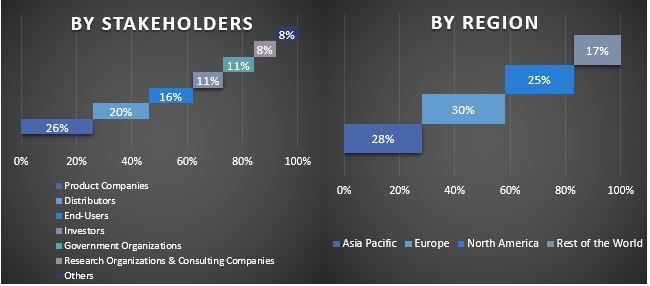
Thiết Kế Thị Trường
Kỹ thuật phân tích dữ liệu tam giác đã được sử dụng để hoàn thành việc ước tính thị trường tổng thể và để đưa ra các số liệu thống kê chính xác cho từng phân khúc và phân nhóm của Mạch Tích Hợp Quang Tử toàn cầu. Dữ liệu đã được chia thành nhiều phân khúc & phân nhóm sau khi nghiên cứu các thông số và xu hướng khác nhau trong các lĩnh vực Nguyên Liệu Thô, Ứng Dụng và Quy Trình Tích Hợp trong Thị Trường Mạch Tích Hợp Quang Tử toàn cầu.
Mục tiêu chính của Nghiên Cứu Mạch Tích Hợp Quang Tử Toàn Cầu
Các xu hướng thị trường hiện tại & tương lai của Mạch Tích Hợp Quang Tử toàn cầu đã được xác định chính xác trong nghiên cứu. Các nhà đầu tư có thể thu được những hiểu biết chiến lược để làm cơ sở cho quyết định đầu tư của họ dựa trên phân tích định tính và định lượng được thực hiện trong nghiên cứu. Các xu hướng thị trường hiện tại và tương lai đã xác định mức độ hấp dẫn tổng thể của thị trường ở cấp khu vực, cung cấp một nền tảng cho người tham gia công nghiệp khai thác thị trường chưa được khai thác để hưởng lợi từ lợi thế của người đi đầu. Các mục tiêu định lượng khác của nghiên cứu bao gồm:
Phân tích quy mô thị trường hiện tại và dự báo của Mạch Tích Hợp Quang Tử về giá trị (USD). Ngoài ra, hãy phân tích quy mô thị trường hiện tại và dự báo của các phân khúc và phân nhóm khác nhau
Các phân khúc trong nghiên cứu bao gồm các lĩnh vực Nguyên Liệu Thô, Ứng Dụng và Quy Trình Tích Hợp
Xác định và phân tích khuôn khổ pháp lý cho ngành Mạch Tích Hợp Quang Tử
Phân tích chuỗi giá trị liên quan đến sự hiện diện của các trung gian khác nhau, cùng với việc phân tích hành vi của khách hàng và đối thủ cạnh tranh của ngành
Phân tích quy mô thị trường hiện tại và dự báo của Mạch Tích Hợp Quang Tử cho khu vực chính
Các quốc gia lớn của các khu vực được nghiên cứu trong báo cáo bao gồm Châu Á Thái Bình Dương, Châu Âu, Bắc Mỹ và Phần Còn Lại của Thế Giới
Hồ sơ công ty của Mạch Tích Hợp Quang Tử và các chiến lược tăng trưởng được các công ty tham gia thị trường áp dụng để duy trì trong thị trường đang phát triển nhanh chóng
Phân tích chuyên sâu ở cấp khu vực về ngành
Câu hỏi thường gặp Câu hỏi thường gặp
Câu hỏi 1: Quy mô thị trường hiện tại và tiềm năng tăng trưởng của thị trường Mạch Tích Hợp Photon tử là gì?
Thị trường Mạch Tích Hợp Quang tử được định giá 12.142,7 triệu USD vào năm 2023 và dự kiến sẽ tăng trưởng với tốc độ CAGR là 12,9% trong giai đoạn dự báo (2024-2032).
Q2: Đâu là những yếu tố thúc đẩy sự tăng trưởng của thị trường Mạch Tích Hợp Quang tử?
Sự tăng trưởng của thị trường Mạch Tích hợp Quang tử được thúc đẩy bởi nhu cầu ngày càng tăng về truyền dữ liệu nhanh hơn, hiệu quả năng lượng và những tiến bộ trong công nghệ truyền thông quang học.
Q3: Phân khúc nào có thị phần lớn nhất trong thị trường Mạch Tích Hợp Quang Tử theo Ứng dụng?
Phân khúc Viễn thông chiếm thị phần lớn nhất của Mạch Tích Hợp Quang tử theo Ứng dụng.
Q4: Các công nghệ và xu hướng mới nổi trong thị trường Mạch Tích Hợp Quang tử là gì?
Các công nghệ và xu hướng mới nổi trong thị trường Mạch Tích Hợp Quang Tử (PIC) bao gồm tích hợp mạch quang tử-điện tử cho điện toán hiệu năng cao và tăng tốc AI, những tiến bộ trong nền tảng silicon nitride cho các ứng dụng phổ rộng hơn và phát triển các bộ tăng tốc học sâu quang tử.
Q5: Khu vực nào sẽ chiếm ưu thế trên thị trường Mạch Tích Hợp Quang Tử?
Khu vực Châu Á Thái Bình Dương dự kiến sẽ chiếm lĩnh thị trường trong giai đoạn dự báo.
Liên quan Báo cáo
Khách hàng đã mua mặt hàng này cũng đã mua



